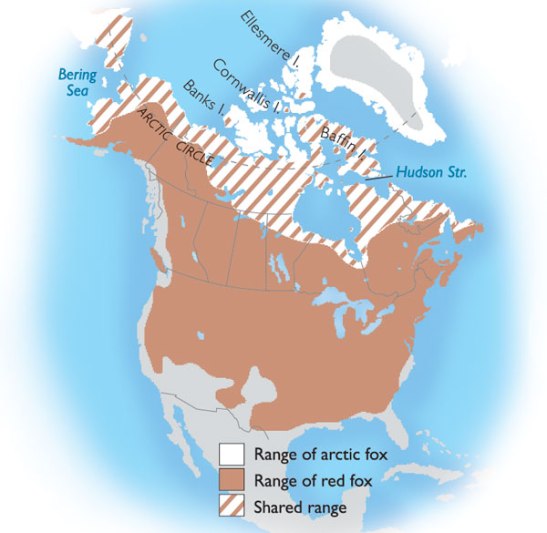The Whisker Chronicles
Whiskers are also known as vibrissa, from the latin vibrare "to vibrate". Vibrissa are the specialized hairs on mammals and the bristlelike feathers near the mouths of many birds. Their resonant design is symbolic of the energies, good and bad, that are reverberating throughout the natural world. Every living thing is connected and, by birthright, deserves to exist.
Day Ten of Twelve Days of Arctic Animals: Arctic Fox
Scientific Name: Vulpes lagopus
Vulpes is from the Latin vulpinus which means “of or pertaining to a fox”.
The prefix lago is Ancient Greek for “hare” and pous is Ancient Greek for “foot”. Arctic fox paws are sheathed in dense fur during the winter, which is why they are named lagopus (“rabbit-footed”). This adaptation allows the Arctic fox to walk on snow and ice.
Where Arctic Foxes Live:
Arctic foxes live in the arctic and alpine tundra of Eurasia, North America, Greenland, and Iceland, usually in coastal areas.

Map obtained at Canadian Geographic http://www.canadiangeographic.ca/kids/animal-facts/arctic_fox.asp
What Arctic Foxes Eat:
The main food for arctic foxes is a variety of rodents, particularly lemmings. Arctic foxes are also scavengers that follow polar bears in order to dine from carcasses after the bears are done. Arctic foxes that are closer to the coast have more access to sea birds, seal carcasses, fish and invertebrates.
How Long Arctic Foxes Live: 14-18 years
Why Arctic Foxes are Awesome:
The fur of the arctic fox has a white phase, which is when their fur is completely white, and a summer phase when the coat ranges from gray to brown on the back, and lighter on the belly.
Why We Care about Arctic Foxes:
European Arctic fox populations in Sweden, Finland and Norway have failed to fully recover after being overhunted in the early 20th century. While the Arctic fox is still abundant in the rest of its range, it has been disappearing from the southern edge of the tundra. Climate change is causing sea ice and tundra habitat to shrink and populations of lemmings to decrease. Warmer climates are sparking a northward movement in red fox populations, creating more food competition as well.



Another cool post. This collection really shows readers how animals are important in the wild, even though far away. In this case, it’s important to see how the Arctic fox acts as an indicator species for climate change!
LikeLike
Thanks, Neva!
I worry about the lemming population declining too. There will be lots of species affected by that. I haven’t examined the details but my first concern is for those animals that eat primarily rodents because something as large as a rabbit is beyond their predator capabilities.
Maymie
LikeLike